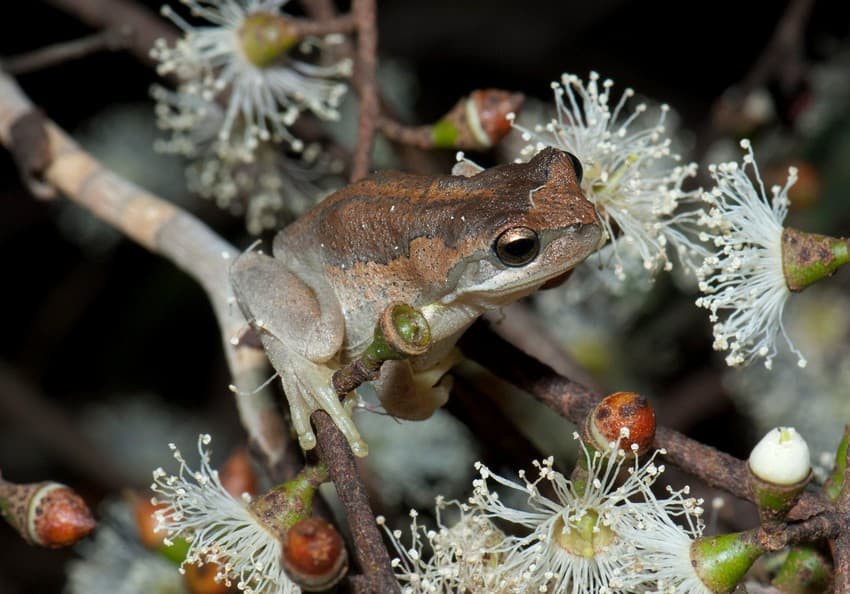As I write this, sitting in Mumbai, one of the most crowded, polluted, and noisiest cities on Earth, an excruciating noise emanating from a drilling machine plays in the background, frustrating me no end. That is not the only man-made sound boring holes in my eardrums. But it is the loudest. It has been on through the day, as I struggle to write this piece. But, then the noise stops for a brief minute. And in those momentary seconds of relief, I hear Common Mynas chirping at my window, crickets stridulating at a distance, and massive fruit bats beginning to take over the sky at this twilight hour. And then the wretched sound turns on again. I can’t help but deeply wonder how these animals ever manage to communicate over this city’s din? If it can rattle my comprehending mind, then I can imagine the effect it might have on them. These unnatural sounds may perhaps be costing them a meal, a mate, a crucial communication, or even their lives.

City of Mumbai in India is one of the noisiest cities in the world. Photo credit: Skye Vidur/Public Domain
The drilling noise just amped up.
We humans are unnecessarily noisy beings. And the repercussions of our noisy ways go far and beyond just human health and mental peace. Man-made noise percolates into the ecosystems through direct and indirect impact on wildlife, so much so that experts are beginning to suspect that these effects could quite possibly be interfering with the process of natural evolution of innumerable species as they are compelled to strenuously adapt to the ever-increasing noise levels. Human noise is often known to shatter barriers of safe levels in several places across the globe. It is well established that noise levels exceeding 80-85 dB (decibels) is harmful to human health as per the World Health Organisation (WHO). Prolonged exposure to loud, disturbing sounds at and above the 80-85 dB mark raises the risks of hearing loss, heart disease, high blood pressure, stroke and compromises mental well-being of people, manifold.
India’s capital territory, Delhi, not only suffers from extreme air pollution, but, also from a severe noise pollution problem. A 2011 study by the Centre for Science and Environment (CSE) had found that Delhi’s roads were the noisiest in India, even more so than Mumbai. Noise levels as high as 106 dB have been recorded on some of the roads in the city which is way above the target set by the Central Pollution Control Board which is 50 dB in silence zones and 55 dB in residential areas. The study also revealed that Delhi citizens showed “the maximum amount of hearing loss proportionate to their age”. The joyous occasion of Diwali, also known as the ‘Festival of lights’ in India, is often marred by the inconsiderate bursting of extremely loud and toxic fume-inducing crackers, which in some parts of India is known to produce noise that often surpasses 125 dB!
Nature’s soundscape is itself a flurry of sounds. Rustling leaves, battering rain, thunderclap, animal vocalisations, swooshing winds, gurgling streams, crashing waves among so many others. But, the natural animal acoustics have developed over millions of years of honing and finding the right niche within a soundscape that allows them to be audible and communicate efficiently with their kind. Today, advancement in technology is allowing us to understand ecology better through the tools of bioacoustics – the study of sounds in a landscape – and is also aiding in conservation. We are beginning to realise just how rich this fabric of acoustical environment is, how it reflects the diversity of the species present in a region, and how the soundscapes are sensitive indicators of change and disturbances within a landscape. But, the deafening cacophony of anthropogenic noises has sent the natural soundscapes in various places across the globe spiralling into disarray. Various animal populations are observed to exhibit behavioural changes to cope or are known to locally disappear altogether. This byproduct of countless anthropogenic activities has penetrated even some of the remotest corners of the globe including the aquatic environments.

A colony of mouse-tailed bats in one of Delhi’s many ruins. Man-made noise is known to disrupt the ultrasonic signals emitted by bats. Photo credit: Rohit Chakravarty
Different species of animals rely on acoustic cues and signals for different reasons. These reasons could range from finding the right mate, identifying a suitable habitat, escaping predators and even warning their kin, protecting their young, or asserting their hold on territories. Even the modes of generating and communicating sounds differs among animals. Let’s take bats, for example. Most bats rely on their echolocating abilities, and emit ultrasonic waves which bounce off any object in their path and are reflected back, which tells the bats of their prey or other obstacles in the vicinity. Man-made sounds are known to often disrupt their signals, resulting in more time and energy spent on searching for food.
“The impacts of urban noise on bats are not very well-studied. Studies in some parts of the US and Europe have shown that some species of bats avoid noisy urban environments. Species that listen to the sounds of their moving insect prey and echolocate at low frequencies (matching anthropogenic sounds) are most likely to be affected by urban noise. If you walk around with a bat detector in peak traffic in Mumbai or Bangalore, you will see what I’m talking about. The detector gets filled up with background city noise and it’s hard to discern the bat calls (even when they are there). Which means that even if the bats are super active, their calls get masked by the noise and you don’t know what’s happened there. Studies on birds have shown that they sing at higher frequencies to go over the urban noise level. We don’t know whether bats do that, as yet. It’s much easier for bats to simply call louder over the urban noise but, as far as I know, this has not been fully understood. I think a lot needs to be studied,” says Rohit Chakravarty, a chiropterologist (one who studies bats) presently pursuing a Ph.D. on bats in the Himalayas.
“It is, of course, wise to think that urban noise plays a big role in affecting bat populations – what we need to know exactly, is how, which species, and to what extent,” he adds.

An Indian Ocean humpback dolphin breaks surface against Mumbai’s coastal cityscape. Dolphin communication is greatly hampered by noise from sea vessels and construction work. Photo credit: Shaunak Modi
Similarly, marine cetaceans such as dolphins also produce ultrasonic acoustic signals for locating their prey, navigation, foraging and communication underwater. But, studies have shown how underwater anthropogenic noise from vessels deploying SONAR or from propellers interferes with the cetaceans’ acoustic signals, forcing them to alter their “language” in the hopes that their sounds don’t get masked. Such noisy interference is even known to displace these animals from their habitats. Long periods of exposure to such prolonged man-made noise has even shown to trigger changes in their diving and foraging behaviour, cause hearing loss, energy loss and extreme stress. The impact of anthropogenic noise on freshwater fauna, though having not received equal investigative attention, poses a threat just as severe. India’s national aquatic animal, the endangered Gangetic River dolphin (Platanista gangetica gangetica) which is found only in shallow waters of rivers in India, Bangladesh and Nepal, is essentially blind and relies entirely on echolocation by constantly producing high-frequency ultrasonic clicks to move around, detect prey, and largely make sense of its surroundings. A study conducted in 2019 in the Ganga river in India that was published in Scientific Reports has conclusively shown that man-made underwater noise from vessel traffic and propellor movement is capable of driving acoustic behavioural changes in these dolphins. It was further found that at shallow depths, the severity of underwater noise only got more acute.
“The effect of underwater noise on river dolphins is exaggerated simply because of the circumstances the animal finds itself in. Having evolved in sediment-laden Himalayan rivers, the reliance on sound over sight in the functioning of a river dolphin is crucial. Added to this, the animal also lives in a space-limited environment as opposed to marine dolphins that have the luxury of evading a noise source, by either moving away considerably or diving deeper. Given the river dolphin’s reliance on sound and the fact that they live in such shallow environments, any form of impediment to their sound production and reception ability can turn out to be rather fatal, at both the individual and at the population level,” explains biologist Mayukh Dey, one of the authors of the study.
As the Government of India plans to develop several rivers in the Ganga-Brahmaputra basin, the habitat of the Gangetic river dolphins, into major waterways, the important issue of addressing underwater noise pollution becomes all the more pertinent.
Listen to this recording of underwater sounds including ultrasonic clicks produced by Gangetic river dolphins and man-made vessel noises. Audio clip courtesy: Mayukh Dey
Broadly speaking, most sources of man-made noise can be slotted as vehicular traffic, trains, airplanes, ships, industrial activities, oil extraction, mining, construction, and city sounds. Urban spaces, by far, paint the noisiest picture, with natural soundscapes altered to the noisy tune of anthropogenic sounds. Research has shown how human noise has led to changed behaviour in birds. So severe is the impact, researchers have found that human activities could actually be preventing birds from reproducing and displaying normal social behaviour. Disturbing ambient noise apart from often masking the bird calls, also causes misinterpretation of vocal signals, affects capacity to communicate properly, disrupting their whole communication systems. Some birds, a study shows, have resorted to calling at night when it is relatively quieter or call at a higher pitch amidst urban noise. Another study performed on zebra finches showed how sounds of moving cars caused them to perform poorly at food finding tasks. A more brazen example to show how much human noise has intimately touched wildlife is that of the Superb Lyrebird native to Australia, nature’s master sound mimicry artist. They have been captured on camera mimicking sounds of car alarms, chainsaws felling trees, and even camera shutter and motors sounds! Noise pollution has caused dramatic decline in various avian species, once common in their respective ranges, in the recent years. Not just hunting, habitat loss and degradation, but noise pollution too, is among the major threats to bird populations, globally.
“Apart from inducing behavioural changes, the serious impacts of anthropogenic noise are also evident on the breeding cycles of various bird species, and the survival rate of their eggs and hatchlings. These evidences should act as a cautionary tale and push us to urgently curb dangerous sound levels produced by human activities. Hardly any study assessing the impact of human noise on wildlife has emerged from the Indian subcontinent where human population and density are among the highest in the world,” says ornithologist Shashank Dalvi.

Black Kite is one of the most common birds of prey sighted in Indian cities such as Mumbai. Here it stands amidst the remains of a pigeon it had been feeding on. Photo credit: Dr. Anish Andheria
Not just birds, even amphibians and insects are exhibiting disturbing reactions to human noise. Research suggests that males of certain frog species such as the southern brown tree frog (Litoria ewingii), native to Australia, have begun to adopt a higher pitch than normal for their calls to be heard over the traffic noise. Frogs, like several other animals groups, call to attract mates and assert territorial dominance. In several frog species, females are known to prefer lower-pitched male calls, as it is considered a trait of a larger and more experienced males. In that case, species like L. ewingii and some others could be feeling the selection pressure imposed by anthropogenic noise and are forced to choose between audibility of vocalisation and genetic fitness. This is very likely to have long-term evolutionary repercussions.

Males of the southern brown tree frog, native to Australia, studies have shown, have resorted to calling at higher pitch than normal in response to heavy traffic noise. Photo credit: Catching The Eye/ Flickr
To put a positive spin on the scourge that is noise pollution, I would like to add that as compared to other forms of pollution, noise does not leave behind any remnants in the environment once the source is removed, unlike say, plastic or toxic chemicals. But, unfortunately, the problem of noise pollution is not taken seriously enough. Even nature conservation is largely focused on physical protection, and restoration of wild habitats and wildlife. In countries like India, strict monitoring and regular assessments in noise prone areas at least, should be carried out. Creating more awareness among people is extremely crucial to be able to inculcate an individual sense of responsibility. For those whom exposure to loud noises is an occupational hazard, proper safety measures should be implemented and practiced.
The intangible and invisible impacts of anthropogenic noise on people and wildlife are deadly, and very real. So, next time think twice before you press that car horn, or light that loud fire cracker. We desperately need to mend our noisy ways. We need to just shush!
——————————————————————————————————————————————————————
About the author: Purva Variyar is a conservationist, science communicator and conservation writer. She works with the Wildlife Conservation Trust and has previously worked with Sanctuary Nature Foundation and The Gerry Martin Project.
Disclaimer: The author is associated with Wildlife Conservation Trust. The views and opinions expressed in the article are her own and do not necessarily reflect the views and opinions of Wildlife Conservation Trust.
——————————————————————————————————————————————————————
Your donations support our on-ground operations, helping us meet our conservation goals.
——————————————————————————————————————————————————————
Related Links
- South Asian Scientists and Conservationists Bust Myths About Bats and COVID-19
- About Us
- 9 Steps to an Environment Friendly Lifestyle
- The Solace of Birdsong
- Status of humpback dolphins and finless porpoises
- Tigers: A Troubled Existence

